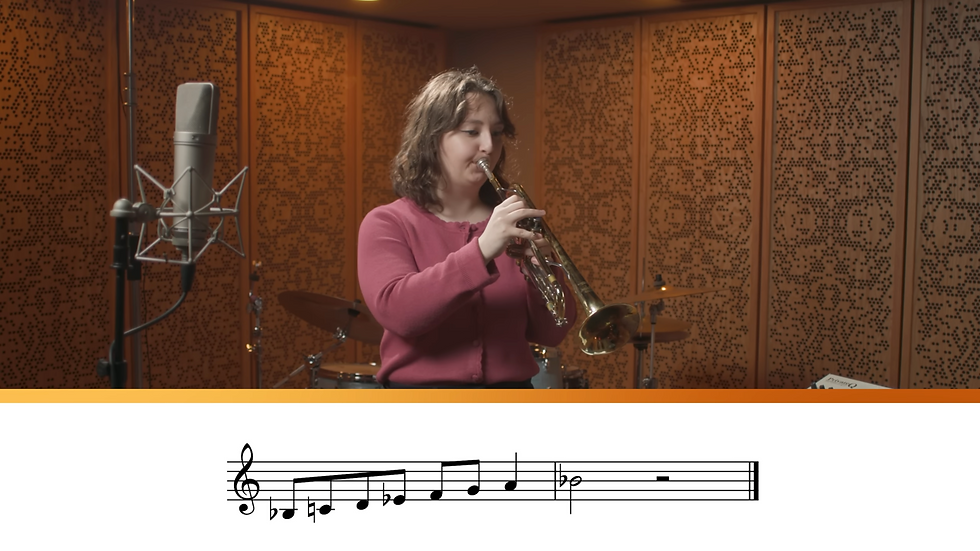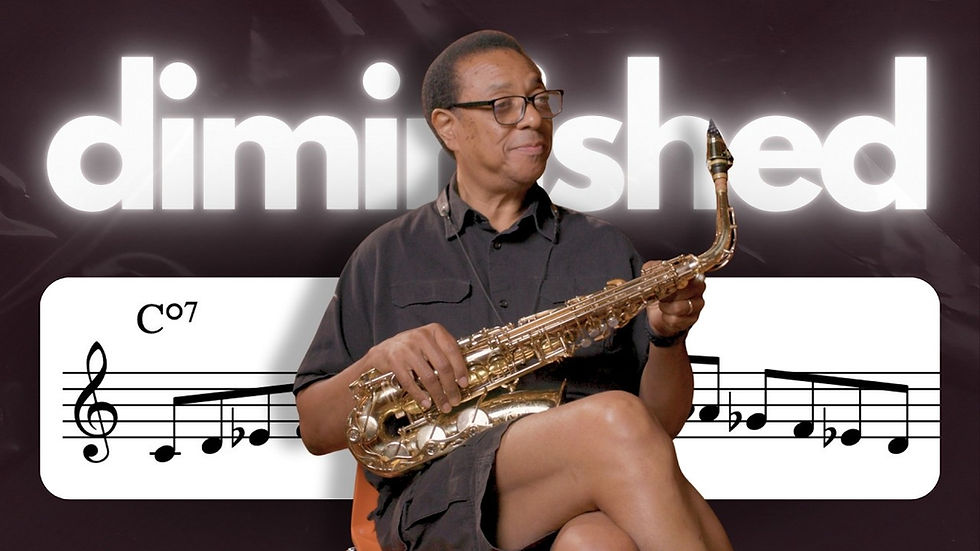You Don’t Need 1,000 Licks… You Need This System
- Jazz Lesson Videos

- 2 hours ago
- 4 min read
Shedding bebop is all about slow, focused repetition and connecting ideas through real harmonic movement.
But first, what is bebop? Bebop is the sound of 1940s jazz, fast, harmonically rich and full of forward motion. It's built around chromaticism, enclosures, voice leading, and rhythmic variation. All of those little details make the lines weave smoothly through all of the changes. When you understand these building blocks, you're not just learning licks, you're learning the jazz language that improvisation is built on.
Today, we’re going to share something really special, our brand new Bebop Bootcamp from Jazz Lesson Videos. This course is all about helping you build real bebop fluency step by step, by using the same techniques and tunes that bebop legends such as Charlie Parker, Dizzy Gillespie and Bud Powell used. Now let’s get playing!
Contents
Chromaticism
One of the first concepts that we're going to be looking at is chromaticism, and it's actually really simple. It's just the use of notes outside of the diatonic scale. So a diatonic scale is your typical major scale, but you’ve probably also practiced your chromatic scales, and all of those chromatic notes are a part of chromaticism.
Bebop would not be bebop without chromatics. Every single bebop legend uses chromatic notes as passing tones and in enclosures (which we're going to talk about in a second), but it's a very integral part to bebop. Using chromatic notes helps us create more color and tension in our solos, and they also help us with movement and voice leading, which we'll talk about in a second.
Enclosures are another concept that we're going to be talking about. An enclosure is basically when you have a target note and you approach it from above and below. So for example, if our target note is a G, we’re going to play the Ab above it and the Gb below it, so that the G is right in the center. Using enclosures helps us get out of that diatonic sound. It's very influenced by amazing bebop artists such as Dizzy Gillespie.

To show you the difference, here’s a diatonic ii-V-I, lick, and we're going to compare it to another ii-V-I lick that has enclosures in it.

Here's a similar line, but this time using enclosures.

You can see just by adding those chromatic notes, that line automatically has a little bit more color. To better understand enclosures and to train your fingers to kind of feel that chromatic movement, Kellin created this exercise that goes chromatically up the scale, but uses enclosures along the way.

This exercise is a good pattern to learn, just to get your fingers used to that kind of movement, and we recommend learning it both forwards and backwards. It's also helpful to put enclosures around each of the scale tones of your major scales.
Here’s an example in Bb.

If you use those chromatic and major scale exercises and put them through all 12 keys, you'll be so good to go.
Bebop scales
The next concept that we're going to talk about are bebop scales. If you haven't heard of these, there are three main ones. It's basically taking a major scale, a minor scale, or a dominant scale and adding a chromatic passing tone into it so it becomes an eight note scale instead of seven.
So first we have the major bebop scale. The major bebop scale adds in a b6 or #5, depending on how you're thinking about it. Let’s look at a concert B flat scale.

And now adding in that b6/#5, here's what the major bebop scale looks like.

Adding in a chromatic passing tone or an eighth note to this scale helps you put the chord tones on all of the down beats of each bar. And this also applies to dominant and minor bebop scales.
Looking at the dominant bebop scale, it's a little bit different. Instead of adding a b6 or #5, we're just adding the b7. So in this scale, you'll have a flat and a natural 7, and that looks like this.

Then the minor bebop scale is basically the same thing, except this time you add a b3.

Here’s an exercise you can use. It basically goes through the bebop scale in thirds, and you can move it up and down and do it in all 12 keys.

That exercise utilized the dominant bebop scale, but you can do this same exercise with the other two bebop scales that we mentioned previously.
Learning melodies
Let’s look at a tune now — Charlie Parker's “Ornithology.” This head has some really great call and response phrases. So let's look at the melody from a phrase perspective.

Each phrase is honestly a really cool line on its own. So we can just go line by line. The tune starts out right off the bat with this killer line. Then soon after, it's met by its response.
Now before we move on, let's look at the two lines that we just played. For that first line, we’re not even going to play it on our horn until we can sing it and accurately hit those pitches with our voice.
Once the line is fully internalized with your voice, then you can move it to the horn. And if the speed is difficult for you at first, that's fine. Play it 10 times slow. Play it until you’re sure you can’t get it wrong, and then move on to the next phrase.
Now let’s look a solo over Ornithology, implementing all of the techniques that we talked about in this module.

That’s all we have for today! Hope you enjoyed. If you want to see how Kellin played through any of the examples today, make sure to check out our accompanying YouTube video You Don’t Need 1,000 Licks… You Need This System as well as our Bebop Bootcamp!
We’ll see you next time!



Comments